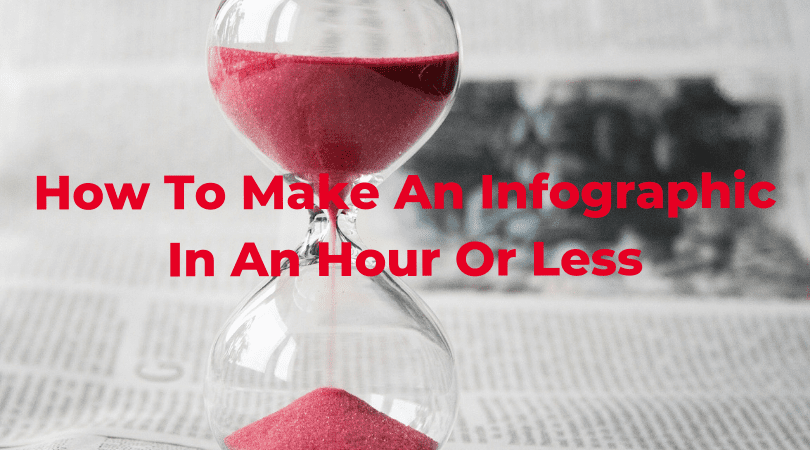“A wealth of information creates a poverty of attention.” said, Herbert Simon Nobel Prize winner for Economics in 1978.
The quote is indeed relevant for today’s information avalanche. There’s so much to read that recipients constantly must choose what to pay attention to.
The average human attention spans are decreasing with the increasing availability of information. Text rich content with numbers all around has an incredibly low chance of retaining attention if they manage to attract it in the first place.
However, it is important to convey the complete message to your audience despite their short attention spans. This is where infographics come in.
It is incredible how visual data representation can make your message attention-grabbing and memorable.
Infographics are getting popular both in digital and print media. Using color, illustrations, charts, and appropriate white space, infographics make content easier to read, navigate, and remember.
Does that mean converting text into graphics will solve the problem? Not really, we can’t possibly convert everything into images that can educate and influence at the same time.
However, your content can be turned into a visual story, and that’s exactly what an infographic does for you.
What Makes a Good Infographic?
To start with, keep the infographic short and simple. The data from the previous decade might have great numbers. However, if it doesn’t support your story, it should not be your canvas. Keeping it simple makes your infographic relevant and attention-grabbing.
A good infographic has to be easy to comprehend. If you load your infographic with too many irrelevant pictures, it is no better than content loaded with hard to infer numbers. In both cases, it is difficult for the reader to comprehend and process your message.
Similarly, an infographic should use universal icons and symbols. Not all readers might be able to interpret uncommon symbols. Hence, it is always safer to choose symbols that are universally used and understood.
Lastly, a good infographic should be consistent. It is a great idea to start with a mood board when designing an infographic. Aim for an original and cohesive design that supports the subject of the infographic. Whether it be marketing content, fire safety guidelines, or an awareness campaign, keeping a consistent tone makes the information easier to process and navigate.
Now that we have discussed what makes a good infographic, it is important to mention its essential components. There are three main parts which you should focus on making simple, attention-grabbing, and consistent.
What are the Three Main Parts of an Infographic?
You can divide an effective and influencing infographic into three basic parts, as explained below.
Telling a Story:
An effective infographic must tell an engaging story. This means that the information mentioned should be interlinked and lead to a conclusion. Without a story that connects the data, an infographic is nothing but a collection of images.
However, it is not as simple as it sounds. While transforming the information to a story, you should consider the following:
What story do you want to tell?
Asking this to yourself can help you frame the story. It helps to specify the topic and screen out the fat. Knowing the topic will also help you identify highlighting headers when you design
Is the story relevant to the organization?
This is an important question to ask. If you let any irrelevant information be part of your story, you kill the purpose of creating an infographic. Now that you know the topic, it is important to filter all irrelevant information.
Why are you telling this story?
Asking the why question will help you from formulating your storyline to choosing the right color palette.
Who are you telling the story to?
Perhaps the biggest mistake would be to disregard your audience when building the story. It is important to know who will be reading the infographic. This will not only help you make your story relevant but also choose the right language to convey it.
Choosing the Right Data:
Accurate data is a significant part of any infographic. Just as a marketing report has data from credible sources, an infographic showing marketing return on investment should display accurate data.
The second and more tricky part of depicting data is to make it easier to understand. For example, “The company made 16987 units of sales as compared to 15097 last year,” this is harder to process. You can alternatively depict a rise of 12.5% through a graph or simply a green arrow symbol.
The purpose of an infographic is to simplify data processing for the audience. The more user-friendly you can make your data, the better it is.
Writing the Copy:
Infographics are not just about data and graphics. You surely need to write snippets of text to make sense of the story.
Make use of two-liners or concise paragraphs to tie the story together. Make sure to avoid being verbose. You should also be trimming the fat and keeping sentences short and meaningful.
The headline is the anchor of your infographic. Write a catchy, gripping headline that exactly represents the information covered under it.
It is important to keep in mind the audience for your infographic. Knowing your audience will help you select the right tone and vocabulary to compose the copy. As a general guideline, it is suggested to avoid complex vocabulary to make the copy easier to read and understand. Choosing the right font size and color is also important to make the text legible.
Final Words
Considering the diminishing attention spans of readers, infographics are a great tool to convey your message. Whether it be itineraries or kitchen safety guidelines, an infographic can make comprehending and retaining information easy.
The average reader is exposed to about 34 gigabytes of information each day. Out of the unfathomable amount of information available both digitally and in print, it is very easy to get your message lost.
However, a simple, consistent, and well-designed infographic that follows a storyline can do wonders to get your message across. To make your design consistent, choosing a color pallet with 3-4 variants is suggested. If you use multiple colors, there’s a chance of distorting the reader. Similarly, the consistency rule applies to the fonts.
Simply put, it is important to focus on the story, data, and copy of your infographics to make it stand out in the clutter.







